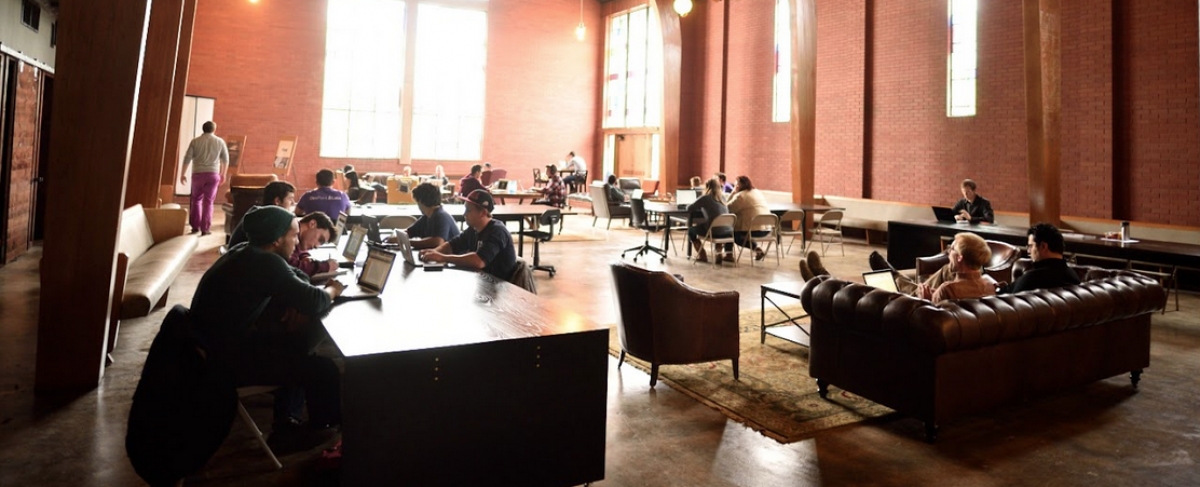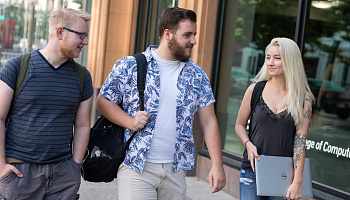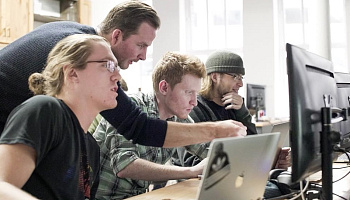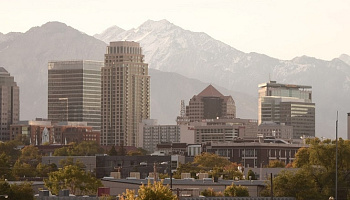Mo Reeder knows a lot about coding and technology hubs. The University of Utah graduate had worked for and developed several coding schools in San Francisco and Provo Utah before deciding to launch his own coding school, V School, which will open a Salt Lake campus this fall in the Greektown neighborhood in the western edge of downtown Salt Lake.
Reeder worked as the Regional Campus Director at General Assembly, a co-working and global educational company specializing in the skills training technological economy and is one of the largest coding boot camps in the country. Living in the Bay Area taught Reeder a lot about coding, there are about 15 boot camps in the San Fran area.
It is that experience that makes Reeder confident in downtown Salt Lake’s growing tech scene and the role coding schools play in producing skilled tech employees. “Pound for pound the tech scene in Salt Lake is a well kept secret,” said Reeder.
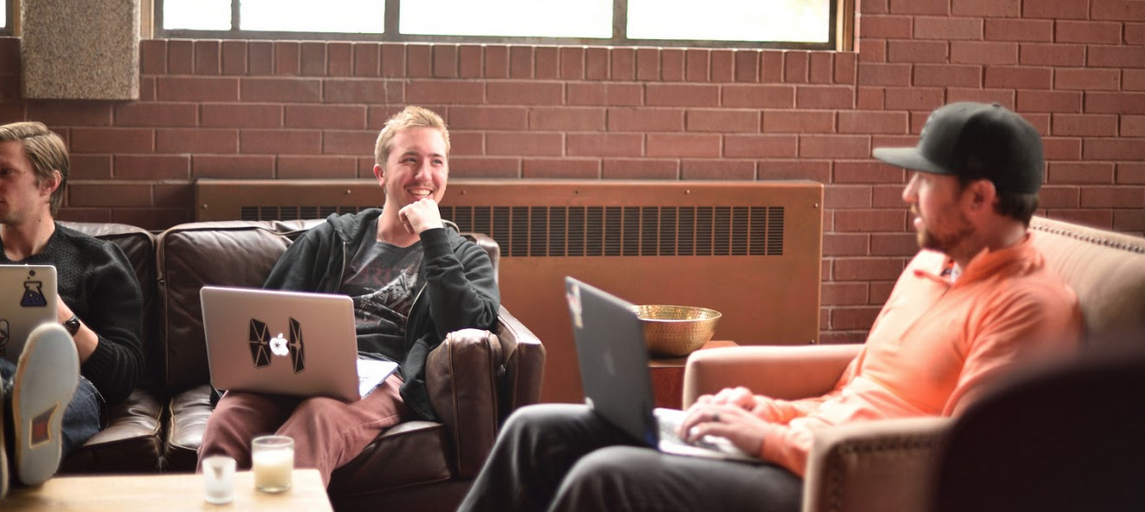
V School is one of four coding schools to move downtown including, DevMountain (a school Reeder helped launch) that like V School began in Provo but has recently added a campus on Main Street between 300 and 400 South. “Salt Lake has an important role in the growing Utah tech scene” said Cahlan Sharp, the co-founder and CEO of DevMountain. “It is the center of what is happening in Utah.”
Utah’s growing tech scene has received an abundance of national press recently. The state is regularly vote the “Best State for Business”, including a July top ranking by CNBC. Forbes Magazine ranked Utah the “Best State for Business and Careers” in 2016 the second consecutive year. The magazine also ranked Utah the second in the country for its list of the “Fastest-Growing States for Tech Jobs in 2015” for Utah’s nearly six percent job growth in the technology sector in 2015.
Companies are drawn to the Wasatch Front, and specifically downtown, for its education workforce and quality of life. With companies like Adobe and Vivint bringing attention to Utah’s Silicon Slopes and Provo becoming an emerging hub for startups, more and more national technology companies will find their way to Utah.
But it is not just the companies relocating here that is attracting national attention. Utah is also building a reputation for quality coding camps. In May, Capella Education Co., a Minneapolis-based company, purchased DevMountain for $20 million. DevMountain started in Provo in 2013 but has expanded to four campuses. Besides its downtown Salt Lake location, the coding camp has locations in Dallas, Texas and Addison, Texas.
Coding camps are different from a standard higher education program. Students learn in small cohorts, with full time coding cohorts usually lasting only 13 weeks. Graduates of coding camps have no trouble finding work. According to Reeder, 100 percent of V School’s graduates found work with the first month after completing the course.
As the technology sector grows, so will the demand for skilled workers. Reeder argued in Salt Lake’s tech sector there is a negative unemployment rate, with an estimated 6,000 unfilled coding jobs in the Salt Lake Valley. The people at coding camp, Iron Yards, saw the potential of Salt Lake’s growing tech economy. The company, which has 22 campuses nationwide, opened up a temporary campus in February in South Jordan. In September the school will begin classes in downtown on Main Street near 300 South.
“Salt Lake has a very strong, robust startup and tech echo system that continues to grow,” said Garrett Clark, the Salt Lake City campus director for Iron Yards. “The business community is doing the right things to attract technology downtown.” Clark cited the growing amount of large companies relocating to downtown Salt Lake as well as the walkability and nightlife as reasons why Iron Yards wanted to be downtown.
The team at Iron Yard estimate that there are 300 jobs open for software engineers every 90 days in the Salt Lake Valley. The challenge for Salt Lake City is to ensure that it is capitalizing on the regional growth economic growth, especially from Utah County. Reeder argues that Salt Lake is the best physically connected city in the region with its public transit access and proximity to the airport. Salt Lake not only has its connectivity to attract companies, but it has the state’s largest and most vibrant downtown.
When Iron Yards and V School start classes this fall, there will be four coding schools operating downtown, along with Neumont University, a for-profit school offering undergraduate degrees in technology.
Neumont moved into the old Tribune building, directly south of the Eccles Theater, bringing hundreds of students downtown. Neumont recently joined forces with Helio Training and will offer coding courses at the university’s downtown campus. Helio joins DevMountain and Iron Yards as coding boot camps operating in the heart of downtown on Main Street."
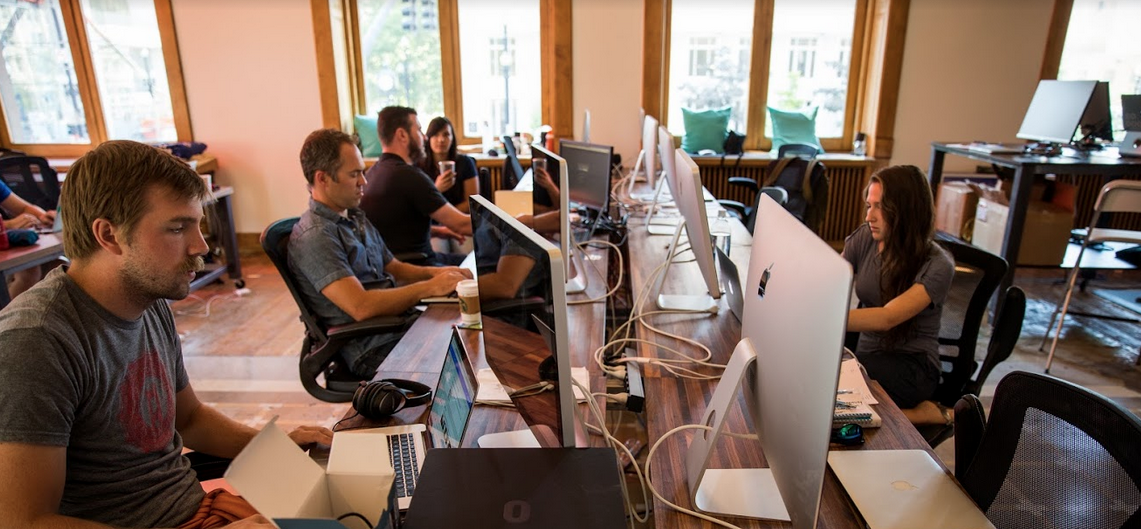
“We love being in downtown Salt Lake, it is not only unique and interesting but it is also really safe,” said Sharp. Sharp argued that Salt Lake’s startup and tech community sets itself apart from Provo and the Silicon Slopes because of its diversity in the variety of startups the city produces. Coding camps are not only providing training for locals, but both schools attract students from out of state. About half of the student body at DevMountain and V School come from out of state.
According to Reeder, most out-of-state students have expressed a desire to stay in the region if they find the right job. While many of the graduates seek employment from established companies, many go the entrepreneurial route and start their own companies. “We are unique because we spit out more companies,” said Reeder. “Twenty-five percent go on to open their companies, meaning every time a student enrolls there is a 25-percent chance that a new company will open in the community and improve economic development.”
Reeder hopes the V Schools location in the Rio Grande District will be a catalyst for growth in the challenged neighborhood. The city, through the Redevelopment Agency of Salt Lake, has created the Station Center project area for the city blocks between the Rio Grande Depot and the Intermodal Transit Hub.
The city plans to turn the area into a vibrant, mixed-use neighborhood that takes advantage of the best public transit access than any other neighborhood along the Wasatch Front. V School’s location on 200 South is directly north of the project area. Reeder expects that many of the school’s students will stay in the area after graduation. As some of the students look to start their own companies, Reeder hopes they’ll consider building their companies in Depot area.
“We aren’t leaving; we will stay on and see the neighborhood get better,” said Reeder.

